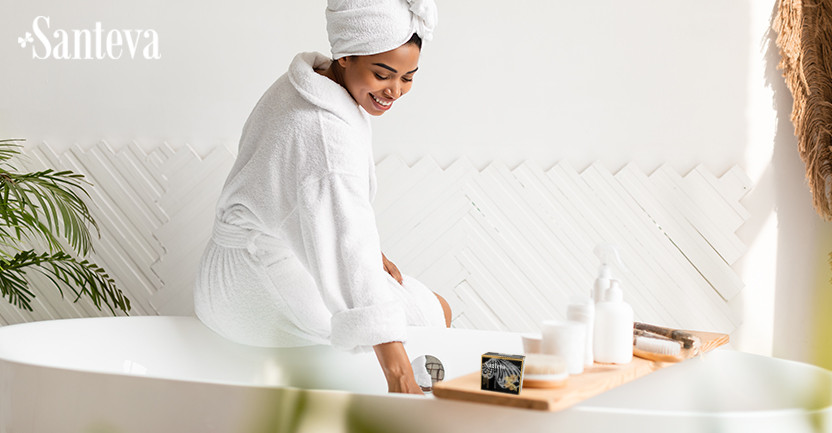Charcoal Soap for Acne: Benefits and Usage
Posted by Santeva on Aug 9th 2022
Charcoal is one of the newer trends in the beauty industry. It is believed to work by trapping and removing toxins from the body, hence the popularity of charcoal soap for acne.
So, how does charcoal soap benefit the skin?
How Activated Charcoal Works
Charcoal soaps work because they are made of activated charcoal. The activated charcoal is said to be responsible for chemically binding other substances and containing them to its surface, a process called adsorption. What’s amazing is that charcoal is claimed to be capable of adsorbing substances weighing thousands more than its weight. Its adsorption power all boils down to charcoal’s large surface area. An excellent example of this application is how activated charcoal is used to filter toxins from the water without removing essential salts and minerals.
Activated charcoal is usually made of ingredients such as nutshells, paper mill waste, peat, fruit pits, wood, and bone. These materials are processed at extremely high temperatures, then activated with hot air or steam. This step aims to increase charcoal’s pores and surface area, allowing it to adsorb more substances.
Benefits of Charcoal Soap for the Skin
Considering how activated charcoal works, there are a few things charcoal soap can do for your skin. These include the following:
- It helps treat oily skin. Charcoal’s large surface area can absorb oils. The soap can eliminate unnecessary dirt and oil from your skin, giving you oil-free and smooth skin, be it on the face or other parts of the body.
- It helps reduce acne. Charcoal soap for acne works since charcoal can remove excess oil and toxins. Excess oil can clog pores and cause breakouts. This kind of soap does not even leave you with red skin.
- It shows some anti-aging benefits. Since charcoal is said to eliminate environmental toxins from the skin, it reduces signs of aging. It is because toxins may worsen signs of wrinkling and premature aging. In this aspect, charcoal soap works like glutathione soap,giving the skin a healthy and youthful glow.
- It helps improve pore size. Charcoal soap can remove grime and dirt build-up from your pores because the activated charcoal serves as an effective catalyst. Over time, pores can reduce in size.
- It gets rid of dead skin cells. Charcoal can be found in different particle sizes, depending on how much exfoliation you want for your skin. Its inherent texture is enough to turn it into a gentle exfoliator. You might find something gritty in a charcoal soap that can remove the dead skin cells.
- It works for all skin types. Charcoal soap is compatible with oily or dry skin because it removes excess oil and dirt while retaining the natural oils. It is also mild for sensitive skin because it does not contain harsh chemicals. It works without leaving the skin red and raw.
What Is the Best Charcoal Soap for Acne?
Have you been dealing with acne? You might get some help from Santeva’s charcoal soap for reducing acne and lightening your skin. Santeva Activated Charcoal + Glutathione Soap helps reduce oiliness, removes impurities, brightens skin, exfoliates dead skin, and detoxifies your skin. The soap has the power of glutathione and activated charcoal for acne-free and glowing skin.
Acne often comes with dark spots and marks all over your face. You can also use Santeva Activated Charcoal to help brighten those spots and give your skin a youthful appearance. It is the effect of the soap’s ingredients, which include activated charcoal, glutathione, kojic acid, coconut oil, alpha arbutin, and vitamin E.
How to Use Charcoal Soap for Best Results
So, how do you ensure that you get the most out of your Santeva Activated Charcoal + Glutathione Soap?
Prepare warm water to wash your face with. It helps open your pores before washing your skin with Santeva Activated Charcoal. Make sure to lather the soap and let it soak on your face for 3-5 minutes. If you want to put this soap’s exfoliating effects, you might want to use an exfoliating glove. To rinse off, use either warm or cold water.

